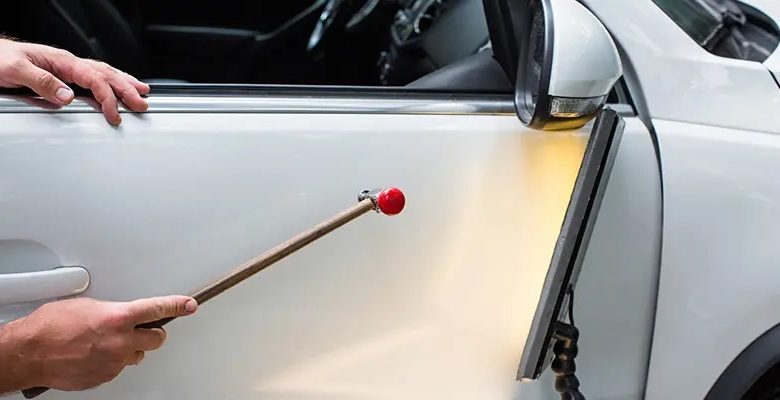The Superiority of Paintless Dent Repair for Hail Damage

Hailstorms can wreak havoc on vehicles, peppering them with dents and leaving owners with the unnerving task of finding a reliable repair option. In the realm of auto body repairs, Paintless Dent Repair (PDR) has emerged as the best approach to restore vehicles damaged by hail. But what makes PDR superior? Let’s delve into the many reasons why PDR is considered the optimal method for hail damage repair.
Preservation of the Original Paintwork
One of the foremost reasons that PDR is hailed as the superior method for auto dent repair is its ability to maintain the vehicle’s original paintwork. Conventional methods often involve filling and painting over dents, which can lead to color mismatches and diminish the vehicle’s value. PDR, on the other hand, gently massages the dents from the underside of the panel, maintaining the factory finish. This process ensures that the vehicle retains its original aesthetic appeal and value.
Cost-Effectiveness
PDR is typically a more cost-effective solution for hail damage repair compared to traditional methods. Traditional dent repair often necessitates panel replacement, filler, and repainting, all of which can be labor-intensive and expensive. In contrast, PDR uses specialized tools to manipulate the metal back to its original shape, reducing labor and material costs. While costs can vary depending on the extent of the damage, PDR often proves to be the more economical choice.
Time Efficiency
The time taken to repair a vehicle is a crucial factor for many car owners. Traditional dent repair methods can take several days to complete due to the stages of filling, sanding, and painting. PDR, however, is a relatively quick process that can often be completed in just a few hours. The efficiency of PDR can save vehicle owners significant time, enabling a faster return to normal vehicle use.
Environmental Responsibility
In an age where environmental sustainability is of increasing importance, PDR shines as an eco-friendly option. Traditional repair methods require the use of chemicals in paint and fillers, which can be harmful to the environment. PDR avoids the need for these substances, contributing to a smaller ecological footprint. By choosing PDR, vehicle owners are making an environmentally responsible choice for hail damage repair.
Widespread Recognition and Use
The merits of PDR are recognized not just by vehicle owners but also by insurance companies and car manufacturers. Insurance companies often prefer PDR due to its cost-effectiveness and efficiency. Car manufacturers also use PDR in their manufacturing plants for the repair of minor dents and imperfections, testifying to the efficacy of the method.
Limitations and Considerations
While PDR holds many advantages, it’s worth noting that it might not be suitable for all types of damage. Very large dents or those where the paint has been broken or scratched may not be suitable for PDR. However, for most hail damage – typically characterized by numerous small dents – PDR proves to be an ideal solution.
In conclusion, when it comes to repairing hail damage, Paintless Dent Repair stands out as the superior choice. It’s a method that preserves the original paintwork, is cost-effective, time-efficient, environmentally friendly, and recognized for its effectiveness. While it may not be the solution for every dent, for many, PDR is the best way to restore their vehicle to its pre-storm condition. Always consult with a professional PDR technician to determine if this method is the best option for your hail-damaged vehicle.

